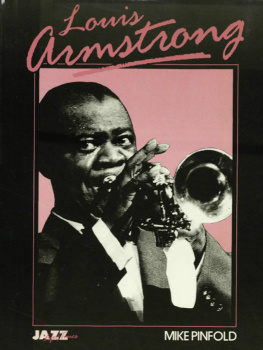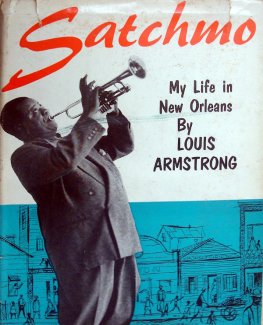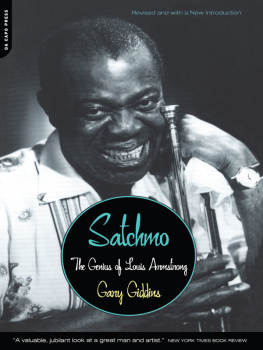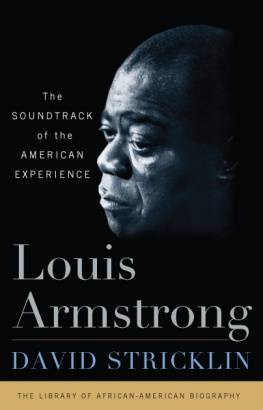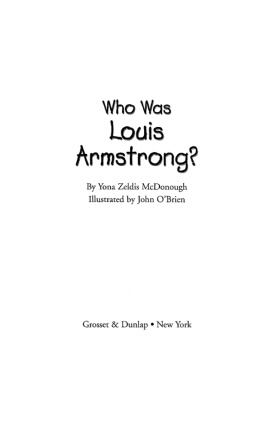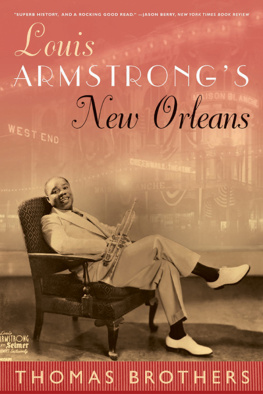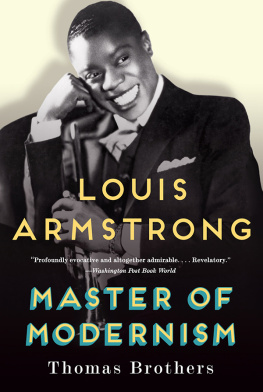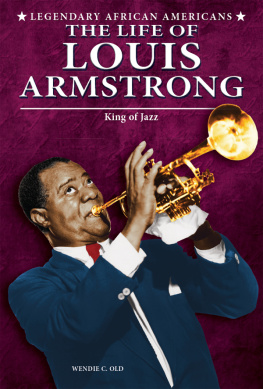JAZZ Life & Times
This is a series of books about jazz artists, all of whom have made either a significant contribution or have had an impact on the jazz scene. Unlike some jazz books that concentrate upon the detail of the performers lives or music, this series is concerned with much more. Here can be seen the social background into which the subject was born and raised and the environment in which his or her music was formed. The social, domestic, racial and commercial pressures that shaped the person are examined alongside an assessment of other musicians who may have influenced the artist or been influenced by them. Of course, the music is not overlooked and each book carries a discographical essay in which the artists recorded output is summarized and analyzed. Well-illustrated, the Life & Times series of books is an important and long overdue addition to jazz literature.


Copyright 1987 Mike Pinfold
This edition 2012 Omnibus Press
(A Division of Music Sales Limited, 1415 Berners Street, London W1T 3LJ)
EISBN: 978-0-85712-826-3
The Author hereby asserts his / her right to be identified as the author of this work in accordance with Sections 77 to 78 of the Copyright, Designs and Patents Act 1988.
All rights reserved. No part of this book may be reproduced in any form or by any electronic or mechanical means, including information storage and retrieval systems, without permission in writing from the publisher, except by a reviewer who may quote brief passages.
Every effort has been made to trace the copyright holders of the photographs in this book, but one or two were unreachable. We would be grateful if the photographers concerned would contact us.
A catalogue record of this book is available from the British Library.
For all your musical needs including instruments, sheet music and accessories, visit www.musicroom.com
For on-demand sheet music straight to your home printer, visit www.sheetmusicdirect.com
 ACKNOWLEDGEMENTS
ACKNOWLEDGEMENTS
I would like to thank Bruce Crowther, John White, Bob Charlesworth and William Jules for their help.
The illustrations in this book come from the Max Jones Collection, Ian Christie, Bergt H. Malmquist, Howard Lucraft. Photo Files, Hans Harzheim, Jack Hutton, Sinclair Traill Collection, John E. Kuhlman, Jazz Music Books, Bill Russell, Eric Jelly, Nancy Miller Elliott, Charlie Mihn, Beryl Bryden, and from stills used to publicize films made or distributed by the following companies: Contemporary Films, United Artists, Majestic, CBS. Pictures are reproduced by courtesy of Jazz Journal International, the National Film Archive, Roy Burchell and Melody Maker.
Although efforts have been made to trace the present copyright holders of photographs, the publishers apologize in advance for any unintentional omission or neglect and will be pleased to insert the appropriate acknowledgement to companies or individuals in any subsequent edition of this book.
Frontiespiece:
Pops, taking care of
business, while
Peanuts looks on.
Louis and Peanuts
Hucko, clarinet.
Americas secret weapon is a blue note in a minor key. Right now its most effective ambassador is Louis Satchmo Armstrong.
Felix Belair, New York Times, 1955.
Louis Armstrong was the greatest single influence in the history of jazz. When one man is responsible for so many classic performances it becomes an impossible task to single out one occasion for special mention, but in 1956 I was witness to a particular performance which in its own way was very special.
For Louis, the 1950s were the most hectic and certainly the most successful years he had ever known. He and his All Stars were playing to mass audiences all over the world. In 1955 he had barnstormed across Europe on a triumphal tour; his concerts were sellouts wherever he appeared; jazz enthusiasts in their thousands flocked to see him. When he played in West Berlin, Germans and Russians alike sneaked over from the Eastern Zone to hear the great Satchmo. It seemed that everyone wanted to see Americas lovable ambassador of good time music.
In May 1956, along with hundreds of other eager jazz pilgrims, I trekked along to Londons Empress Hall to see for myself the greatest of jazz legends. The Musicians Union had only just relaxed their ban on American musicians and Louis was making his first appearance in the United Kingdom for twenty-two years. A buzz of anticipation filled the vast auditorium as we all settled back and waited for the historic concert to begin, but our moment of contentment was not to be won so easily. A seemingly endless procession of variety acts appeared on the centrally positioned revolving stage. Enthusiasm was not dampened, however, and the crowd erupted in a glorious salute when eventually the squat figure of Louis was spotlighted. The All Stars struck up When Its Sleepy Time Down South and we heard the most glorious sound in jazz.
As the thrilling, fat tone of Louiss horn soared high in the cavernous auditorium so, too, did the spirits of each and every listener and smiles spread over the faces of the audience. New boy Ed Hall forced hoarse clusters of ragged notes from his clarinet, and trombonist Trummy Young, in fine declamatory style, pushed and cajoled in forceful obligati to Louiss lead. That evening we heard beautifully phrased, mature, trumpet playing at its majestic best. Along with his magnificent horn playing there was Louiss warm and joyous vocalizing and of course that wonderful hokum that upset so many American critics during the 1950s, but which Humphrey Lyttelton summed up so aptly when he wrote, Louis treads the tightrope between skilful showmanship and loss of dignity with consummate artistry. Truly it was a momentous evening of never-to-be-forgotten musical thrills and unabashed showmanshipand we loved every single moment of it.
When finally we left the Empress Hall that night it was impossible not to dwell upon the contrast between Louiss triumphal return to London and the abject poverty of his origins in another city far away. As Louiss fellow New Orleanian, clarinetist Albert Nicholas, remarked: Its amazing how he came up from the ghetto and turned out to be the worlds greatest.


